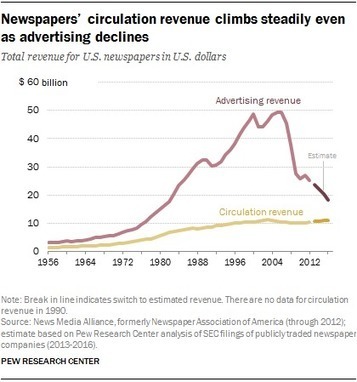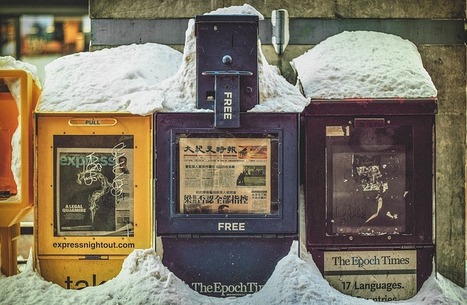The consistent refrain for publishers in the digital age is that everyone is still trying to figure out what can work, from platforms to advertising to workable, sustainable models. But as the path to enlightenment remains covered in fog, possibly smog, the effects of the digital era’s inscrutable disruption are being felt. The clearest recent illustration was last week’s crop of layoffs from outlets new and old: HuffPost, Vocativ, Time, the Los Angeles Times.
The Reuters Digital News Report for 2017 reifies some of the trends good and bad cropping up in various organizations’ earnings reports and elsewhere, offering glimpses of what to try next, where to double down and what to avoid.
One of the more obvious findings, and one we’ve all likely memorized by now, is that the growth of digital revenue has not been enough to offset the loss of print revenue.
Subscriptions have been picking up some of that slack....



 Your new post is loading...
Your new post is loading...















Digital subscriptions are up but will they keep paying?